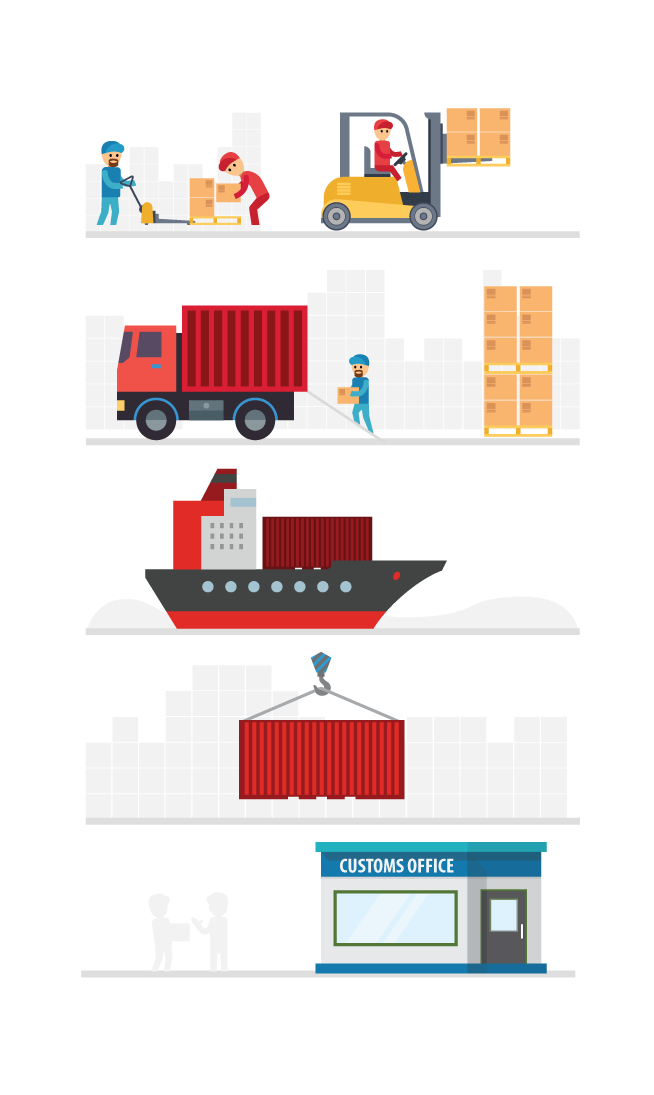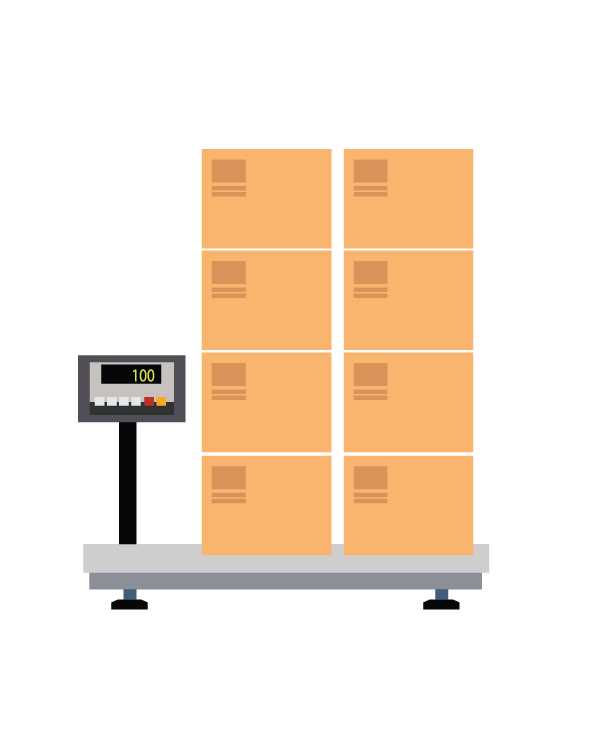A single logistics adder for each of your products
CAPLINQ’s order fulfillment pricing is designed so you can build a European Sales Price List for each of your products knowing only the products’ dimensions, gross weight and COGS. This includes all freight, taxes and duty.
Foreign suppliers that sell their products into Europe often prefer to sell their goods “EXW Factory”. Doing so, shifts the burden of shipping, importing and custom clearing to their customers. Though this is not customer friendly, the alternative – knowing what to charge for the service – often seems too difficult.
Order Fulfillment Pricing using only dimensions, gross weight and COGS.
When you ask CAPLINQ for a price to deliver your products to Europe, your contact will ask you three questions:
- What are the product dimensions?
- What is the product gross weight?
- What is the production value?
With these three pieces of information, we can give you a sliding price scale to deliver your products to your European customers.
Nervous about giving your manufacturing price?
We understand. You aren't the only one. Read the Frequently asked Questions on Order Fulfillment Pricing and read our article on why we ask for your manufacturing price.

Logistics Adder = Duty Charge + Billable Weight Charge


Pay duty on manufacturing cost, not sales price
Typically, foreign suppliers pay duty on the sales price. Using CAPLINQ's order fulfillment service, foreign manufacturers pay duty on the manufacturing price.
Duty is levied on foreign goods coming into the EU. The amount of duty that is paid on these goods depends on:
- The value of the goods
- The harmonization code of the goods being imported
Duty must be paid on the value of the goods being imported into Europe
Whether the goods are worth $1 or $1 million, the tax authority demands that the value of the goods be declared and imposes duty on them. Typically, foreign companies pay duty based on the sales invoice (the sales price). With CAPLINQ as your fiscal representative, foreign companies pay duty based on the Cost of Goods Sold (COGS). CAPLINQ can often make the goods available to your customers in Europe for less than they typically pay in duty charges alone.
See the Frequently asked Questions on Order Fulfillment Pricing to find out how CAPLINQ makes it possible for you to pay duty on the COGS.
The harmonization code determines the duty rate
The typical duty rate on many harmonization codes coming into Europe is 6.5%. This rate is not a fixed rate and may change per product depending on:
- The product's current availability within Europe
- Desire of the European Union to encourage/discourage import
- Global competition of the product
CAPLINQ fights to get you the lowest Duty Charge
Using CAPLINQ's order fulfillment service, CAPLINQ becomes your fiscal representative. As such, CAPLINQ can lobby on behalf of the foreign supplier to get the lowest possible duty rate. Often times, CAPLINQ can negotiate and lock in a lower duty rate because of our local and specialized knowlege.
Billable weight allows CAPLINQ to determine a fixed rate for its service independent of size or weight.
CAPLINQ uses the same formula used by FedEx, DHL and UPS to determine the billable weight. The billable weight is the greater of gross weight and dimensional weight.
The answer to the children's riddle "What weighs more a pound of feathers or a pound of bricks?" is of course - They both weigh the same. The volume the two take up however is significantly different. When calculating the billable weight, it is important to understand if the volume of the goods is more relevant than the gross weight of the products.
What is gross weight?
The gross weight of the product is the net weight of the product itself plus all the packaging. It is in everyone's best interest to minimize the amount of packaging and to reduce the gross weight as low as possibel to minimize the shipping costs.
What is the dimensional weight?
The dimensional weight of a package is a weight given in kilograms. It is calculated by multiplying the length (in cm) times the width (in cm) times the height (in cm) divided by 5000.

Billable weight charge = Billable Weight x Location Rate


The Location Rate determines the Billable Weight Charge
The logistics adder is the sum of the Duty Charge + the Billable Weight Charge. The Billable Weight Charge is calculated by multiplying the billable weight by the location rate.
CAPLINQ prepares a custom order fulfillment price based on your specific shipping and handling requirements. Some goods will require special handling and storage conditions and others won't.
The location rate allows you to mix-and-match products on a pallet
The beauty of the location rate is that it allows you to mix and match your goods. You do not need to ship full pallets of any single product. You are free to optimize the pallets with the products you want to ship - and only pay for the ones you ship.
Many variables can affect the location rate
Examples of variables that will affect the location rate:
- How many kilograms of product will you ship at at time?
- What are the pick up and delivery addresses?
- Do the goods need to be shipped or stored cold or frozen?
- Are the goods considered dangerous goods?
- Are there other special handling requirements we need to know?
Frequently Asked Questions about Order Fulfillment Prices
What is the difference between manufacturing price and COGS?
Manufacturing price and Cost of Goods Sold (COGS) are the same. We use these two terms interchangeably.
Why do I need to provide my manufacturing price?
In order to import and pay duty against the cost of goods sold, that value must be supplied to the European customs office. CAPLINQ appreciates that this could be sensitive information, but we do not need to understand how you got to that number, it just need sto be a value that can be defended.
How do I calculate my manufacturing price?
Of course, there are textbook methods of calculating your manufacturing price, but the simplest way is to imagine that you needed to provide a number to an insurance company in the event you were to lose all your goods. You wouldn't insure against the lost sales, but against the cost of replacing the goods. This replacement value should pretty close to your manufacturing price.
How can CAPLINQ import my goods against the manufacturing price?
Very simply, we don't - you do. CAPLINQ's Order Fulfillment Service makes use of our fiscal representation license. This licence allows us to facilitate the import for foreign companies, but technically the foreign company is still the owner of the goods at the time the goods cross the border. This is how the manufacturing price can be justifed to use as the value of the goods at the time of import.
Is import against manufacturing price legal?
Absolutely and it is one of the tools that multinationals use regularly. Multinationals treat their subsidiaries as manufacturing units and as such import the goods at the cost of goods sold. CAPLINQ's fiscal representative license allows foreign companies to do the same.
What is the risk of importing against manufacturing price?
None whatsoever to the foreign supplier. CAPLINQ's fiscal representation license requires us to set up an account and pay a deposit to the customs office. It then becomes CAPLINQ's responsibility to properly manage the administration aspects of the imports. The deposit is held as the guarantee by the customs offices.


